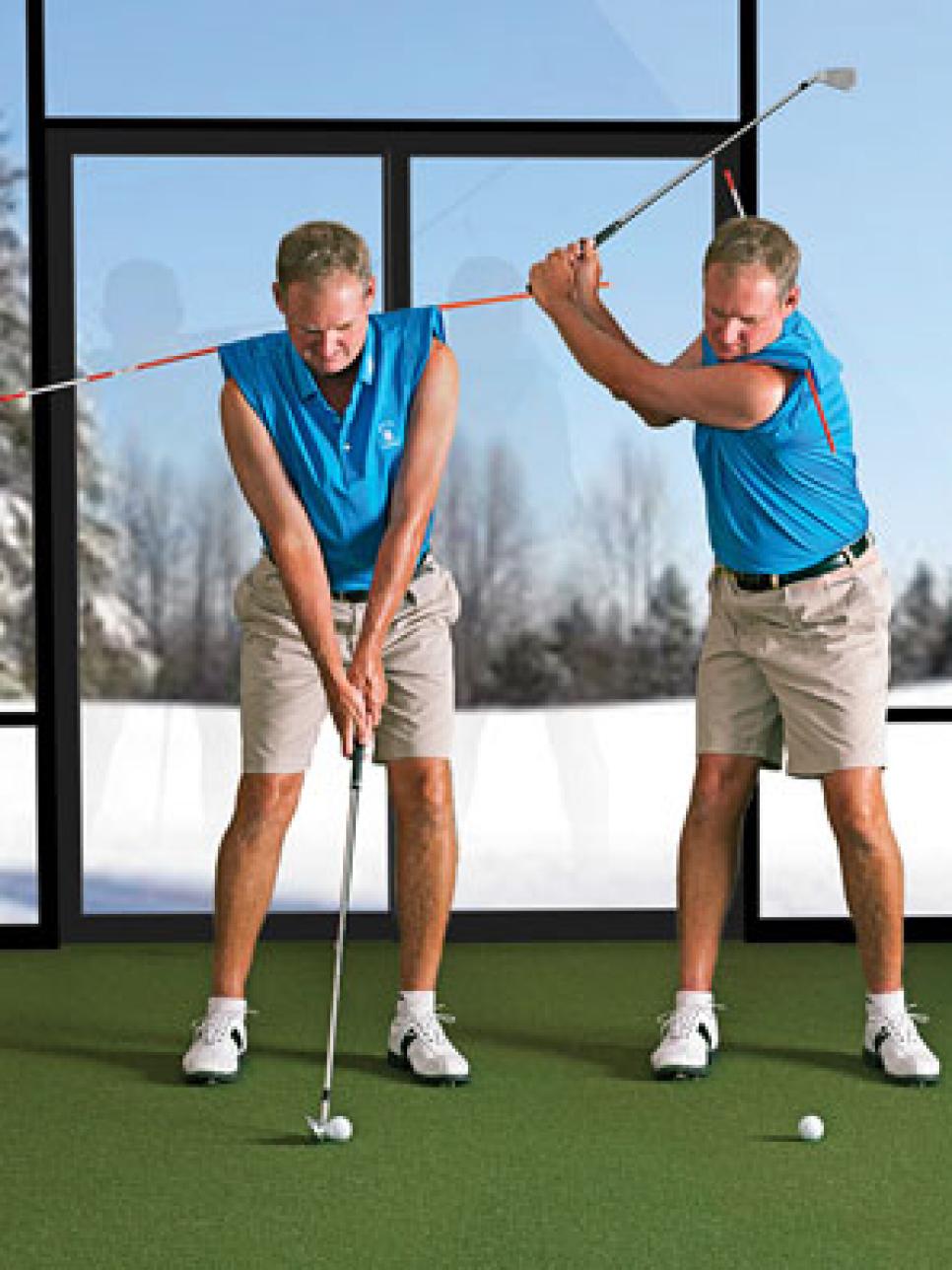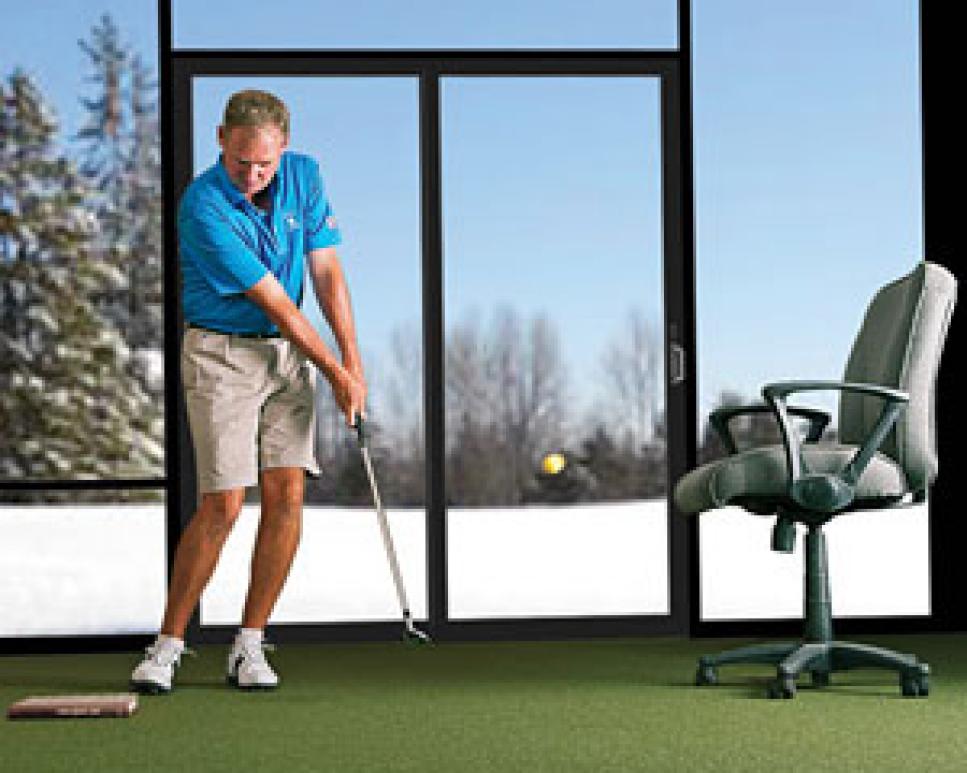Instruction
Breaking 90

Get a look at what you don't see
Shoulder turn is tough to monitor on your own because you can't see yourself swing. To get the next-best thing, slide one of those alignment aids or sticks—I use the ones the hardware store sells as driveway guides for snow plowing—through the sleeves of your shirt so it runs along the top of your shoulders (right).
With the stick in place, you can see it out of the corner of your eye as you swing the club to the top. You'll get an accurate indication of how far your shoulders are turning. With a good shoulder rotation, the stick will point at about your front foot (right).

IMPACT DRILL
Learn to trust the loft on short shots
Good chips and pitches come from catching the ball first, then the ground. You can quickly get a feel and immediate feedback with a few props: a one-inch-thick book, a desk chair and foam practice balls.
Place the book three inches behind the ball, and hit chips or pitches into the back of the chair in front of you (below right). You'll quickly notice that if you scoop with your hands to lift the shot—the common mistake—you'll whack the book.
To make clean, ball-first contact, make sure to rotate through the shot and transfer your weight forward, keeping your left wrist firm. The club's loft will provide all the lift you need. As you improve, alternate moving the chair up and back to practice different trajectories.
STAT FACTS
Players shooting in the 90s will face on average 11 pitch and chip shots per round. With those shots, they'll miss the green more often than they'll get up and down. To make more saves, always give yourself a putt at it—even when that means a more conservative shot onto the green.
—Peter Sanders / shotbyshot.com game analysis

